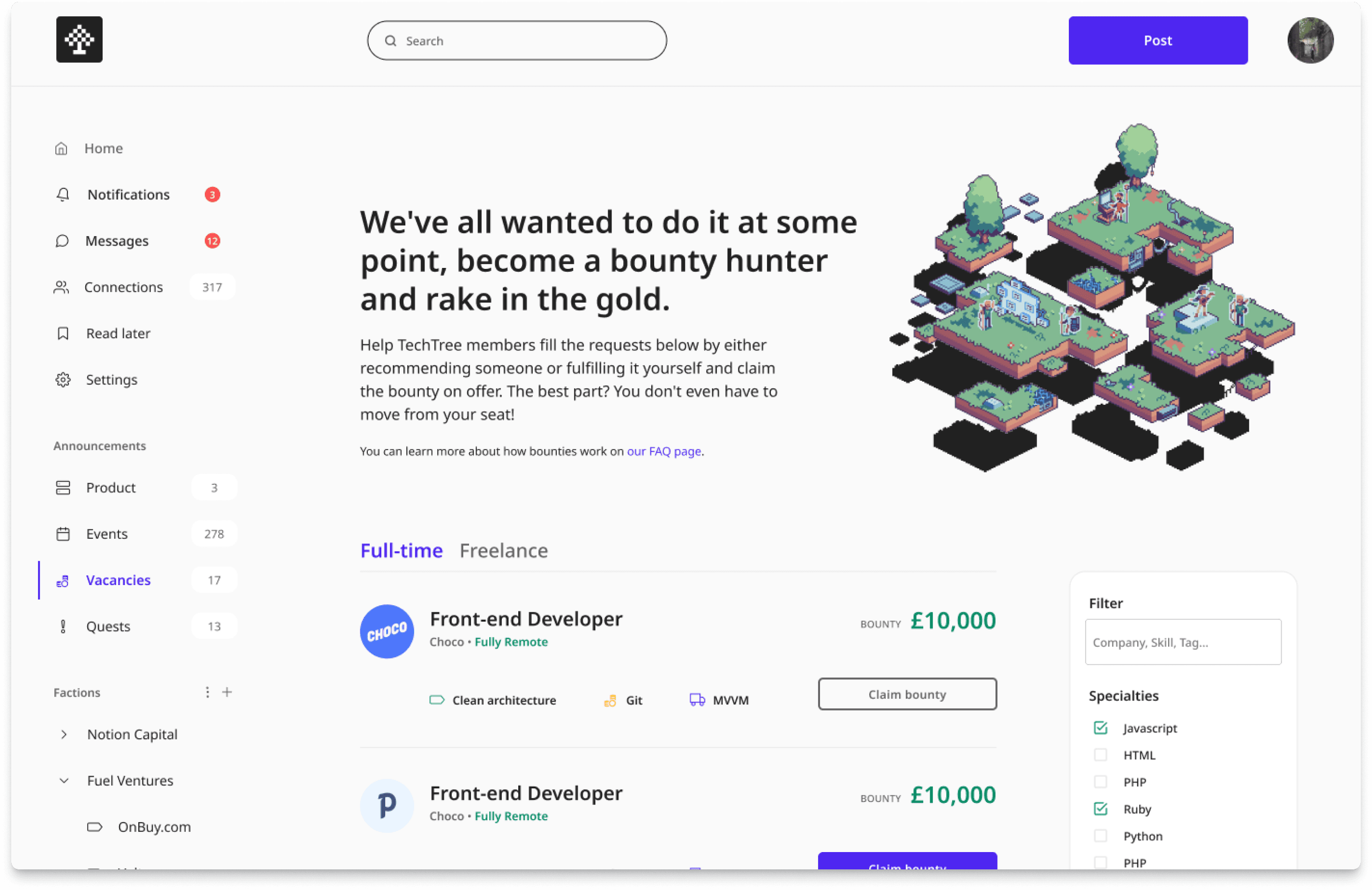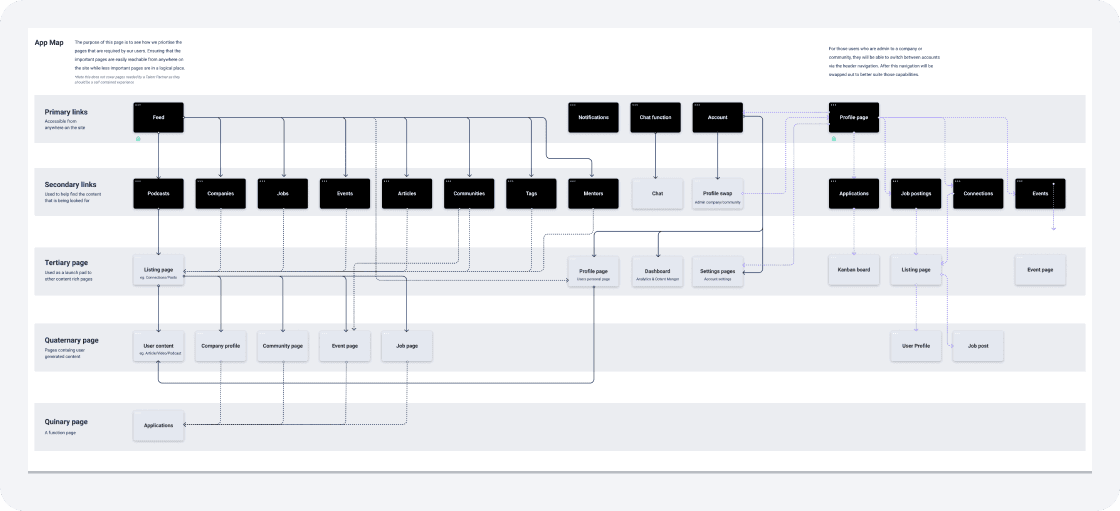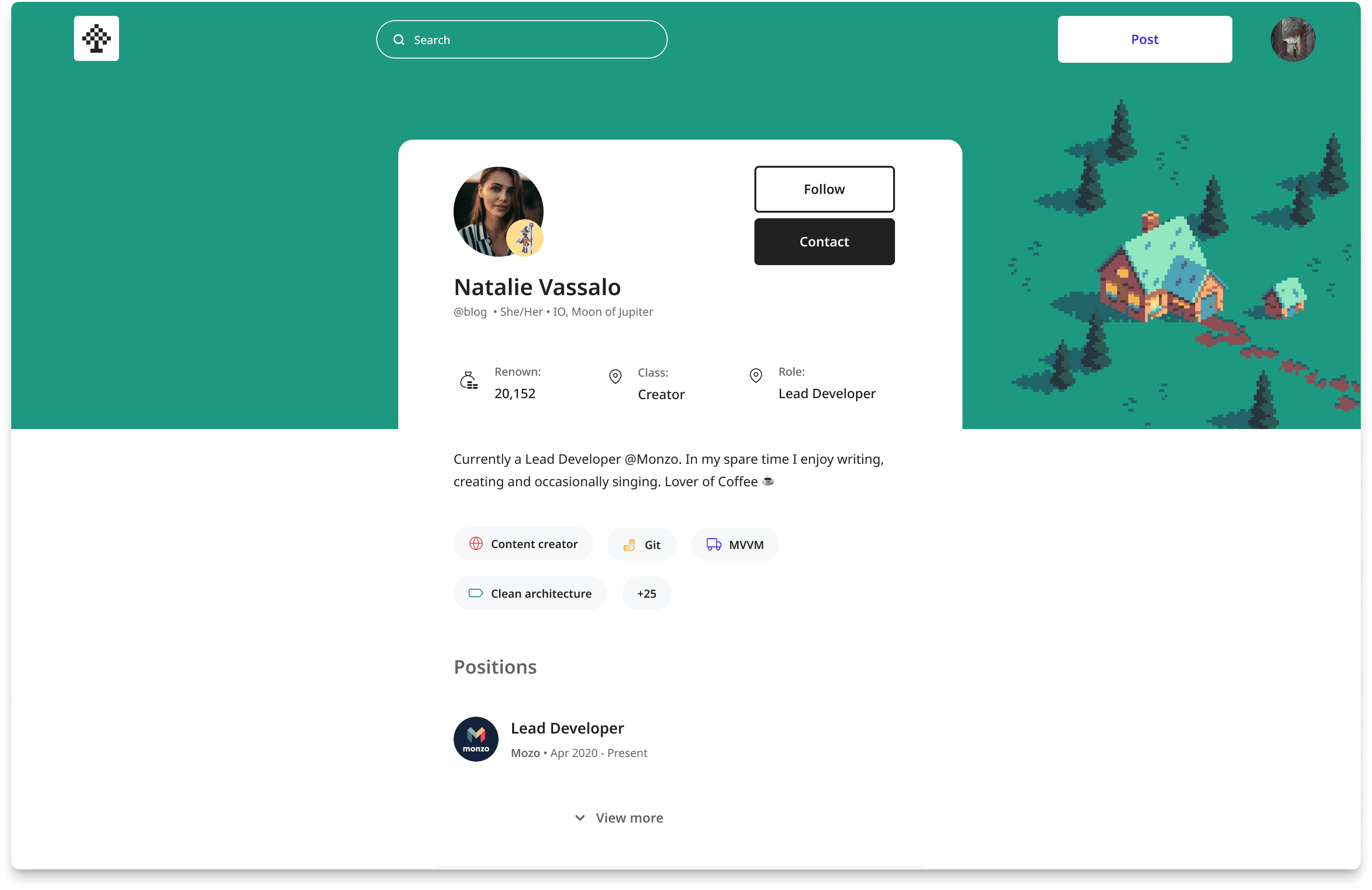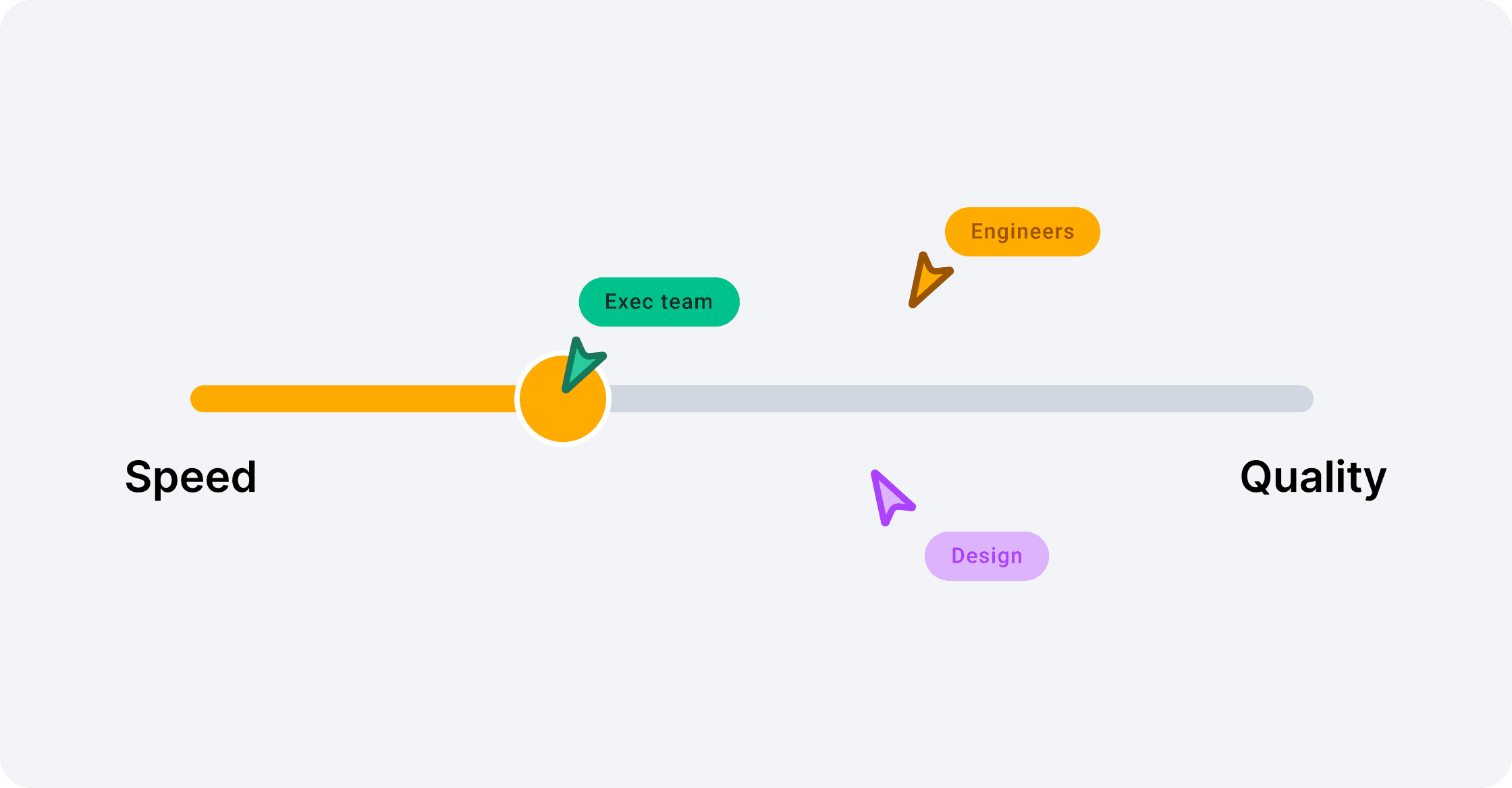The recruitment space can be daunting for most, and hearing recruitment horror stories can often put those in niche industries or disciplines off from seeking help. TechTree wanted to change this by building a community around those niches and connecting those looking for work with those offering work directly.
Design for Bounties homepage
The starting point
At its core, TechTree was all about developers; the name itself had been decided with that in mind. It drew from two points of inspiration: a ‘tech stack’ and a term used in RPG’s ‘skill tree’, which most developers would be familiar with. So, we wanted to play this as we built out the product and brand.
Some exploration happened around a good style that we could adopt for the brand, and we looked at old 90’s websites with crazy effects to more simplistic modern lines before ultimately landing on a 16-bit pixel aesthetic that felt nostalgic. Still, we hoped to bring a little modern flare to it. With that decided, we leaned heavily into the RPG side of the brand, as it played well with the idea of building a community, given how synonymous the two things were already.
We had a lot of fun with this, listing out all our features and their purpose before coming up with alternate names for each, such as calling communities ‘guilds’, turning roles into ‘classes’, and sometimes we didn’t need to do anything as people already included skills and talents on CVs which matched nicely with this approach.
Slowly, we built up a good map of how the product would fit together—showing how users would get from the homepage to community sections, then to user profiles and job boards. It showed us what level of depth we needed and allowed us to make changes early on in the hierarchy.
Sitemap for TechTree product
Building a brand
Starting with wireframes, we began building up these areas and introducing subtle identities around each, adding more substance to our map. For example, the main community page became known as 'the tavern,' where you could jump off into job boards, events or even specific communities for things like Rust developers.
We had fun trying out different levels of branding for each of these, adding and taking away as we moved through the various pages users would be going through using artwork we found online as placeholders. The same happened for social posts so we could get a feel for how everything would tie together.
I love some examples, as they hit that perfect balance of old-school but modern simplicity. Still, we couldn't use any of it, and I can't show it as these images weren't ours, so it's not quite right to do so, but it prompted us to hire a skilled illustrator to create unique artwork for us, and we started to hit this balance in our designs. Check out AngrySnail on Artstation for more of their work.
Design for user profile page
The road to alpha
Although we were an early-stage startup, we had a bunch of recruiters already using a simple product that allowed them to list job vacancies and view a list of members who had signed up to our TechTree, but it was a somewhat one-way system. All the work we had been doing was building towards opening up the platform to users so we could begin building a community.
To help with that, we began building a prototype containing the core features we believed would help with community-building features like user profile pages, company pages and job boards that would open up the platform and make it easier to use. We also stretched this further and explored allowing users to create blog posts or host online events via the platform.
We reviewed a few versions, each limited to a specific function or flow we wanted to test. One prototype covered our idea for ‘factions’, pages dedicated to grouping venture capitalists and their ventures. It was a worthwhile exercise, as it allowed us to move quickly to develop our bounty board feature to get in front of users quickly. It also allowed us to build a roadmap using the feedback we received during testing.




